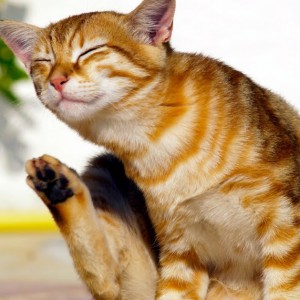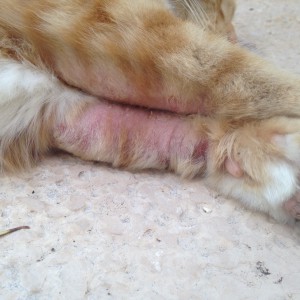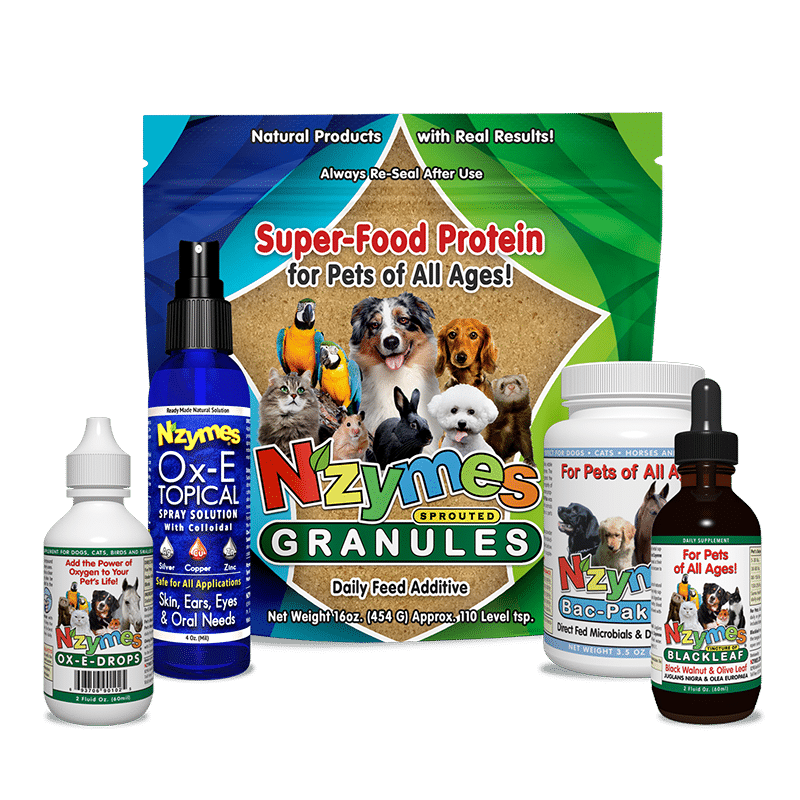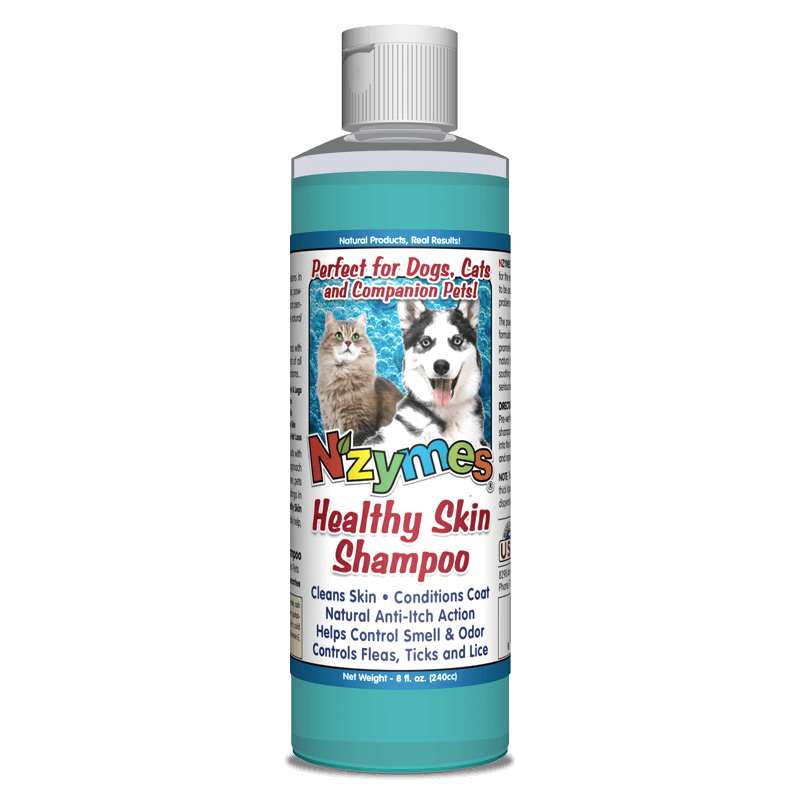
A Natural Approach to Dealing with Skin Problems in Cats
 Cats, just like dogs, are susceptible to itchy skin issues. Cat skin problems can most often be attributed to a nutritional dysfunction in their bodies due to the poorer foods and treats which use too many ingredients that convert to sugar. Cat owners readily recognize that cats are always licking their bodies – as a form of cleansing and grooming. This is how they ingest all that shedding fur that may likely come back up as hairballs, which (incidentally) can be mostly controlled by just feeding Nzymes® Sprouted Granules in the cat’s daily diet.
Cats, just like dogs, are susceptible to itchy skin issues. Cat skin problems can most often be attributed to a nutritional dysfunction in their bodies due to the poorer foods and treats which use too many ingredients that convert to sugar. Cat owners readily recognize that cats are always licking their bodies – as a form of cleansing and grooming. This is how they ingest all that shedding fur that may likely come back up as hairballs, which (incidentally) can be mostly controlled by just feeding Nzymes® Sprouted Granules in the cat’s daily diet.
Visit these Cat Pages and Read the Success Stories
If you notice your cat licking more frequently or causing skin damage by biting or scratching, it is very likely a result of leaky-gut problems and an overgrowth of yeast in the GI tract. Typical destruction of “friendly bacteria” can lead to a wide variety of symptoms and we suggest that you try our Symptom Checker to be fully aware of what symptoms to look for with a cat.
Common Symptoms of Significant Cat Skin Problems:
- Inflammation on the skin
- Red, itchy spots
- Frequent biting and licking of the paws
- Constant scratching of the chin, eyes or belly
- Frequent ear infections
On the other hand, if you notice your cat licking more frequently – especially at paws or lower legs – and biting or scratching more than usual, along with skin abnormalities it is very likely that another issue is involved. These issues are likely due to an imbalance of yeast in their GI tract – caused by the destruction of the very necessary “friendly bacteria” that need to be in control of the gut environment. Two issues are the result: 1) Leaky-gut syndrome and 2) yeast infection or overgrowth of the candida that is normally kept “in check” by healthy amounts of the bacteria. This problem can only be treated naturally, as there are no medications that can rid your pet of an overgrowth of yeast in the gut.
Understanding the Gut, Antibiotics, and Yeast:
While antibiotics have a real value as a treatment for life-threatening bacterial infections, their increased use has led to a volume of modern day health challenges, autoimmune diseases, and gastrointestinal damage. Recovery from these conditions can take a long time. As beneficial bacteria lining the gut wall are eliminated, yeasts like Candida albicans have the opportunity to overgrow and become dominant by attaching to the gut wall. Once attached to the gut wall, yeast has the ability to create openings in the membranes of cells. This can lead to the syndrome referred to as “leaky gut”, which increases the likelihood of foreign particles and proteins entering the bloodstream resulting in inflammation, food intolerance’s, a myriad of digestive problems, autoimmune disease, and other associated imbalances and skin conditions.
Avoiding antibiotic exposure would be the ideal, but it is simply not always practical. Sometimes, antibiotics are necessary but it is just as important to nutritionally protect the GI tract from fungal or yeast overgrowth following the use of medications and to replenish beneficial gut bacteria after antibiotics. Though antibiotics effectively kill both pathogenic and beneficial bacterial strains with the exception of antibiotic-resistant species of streptococcus and other strains, they do not affect the many forms of yeast such as Candida albicans which are naturally found in the body. Yeast Overgrowth or Candida that is normally kept “in check” by healthy amounts of the beneficial bacteria that thrive in the gut. Our experience with these very common digestive problems has shown that they can only be resolved naturally and have to be managed slowly.
Though there may be situations in which cats are actually allergic to something that they come in contact with or eat, this problem is actually not very common. And, while you will often find temporary success in helping the symptoms of this issue through traditional medicine (aka steroids, antibiotics, topical creams, etc), the problem will not go away until resolved holistically. And that’s why we are here.
The Answer: A Natural Approach to Resolving Cat Skin Problems
Learn about the Nzymes® Healthy Skin Program
5-STEPS INTRODUCTORY VIDEOS:
Step 3 Exception (bathing) = cats excluded. We do not recommend such frequent bathing of cats during the cleansing process, so we instead suggest using the Ox-E-Drops Topical Solution (Step #4) with greater frequency (4-5 times per day) while your cat is challenged by these ‘cleansing’ symptoms. You may also purchase medicated wipes at your local pet store that may help assist in this process. All other steps will be the same with cats as with dogs.



